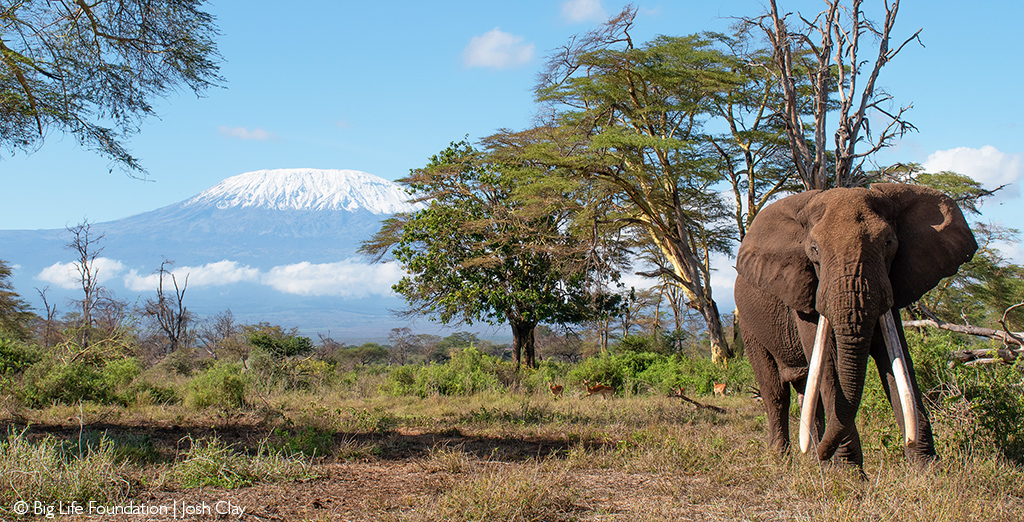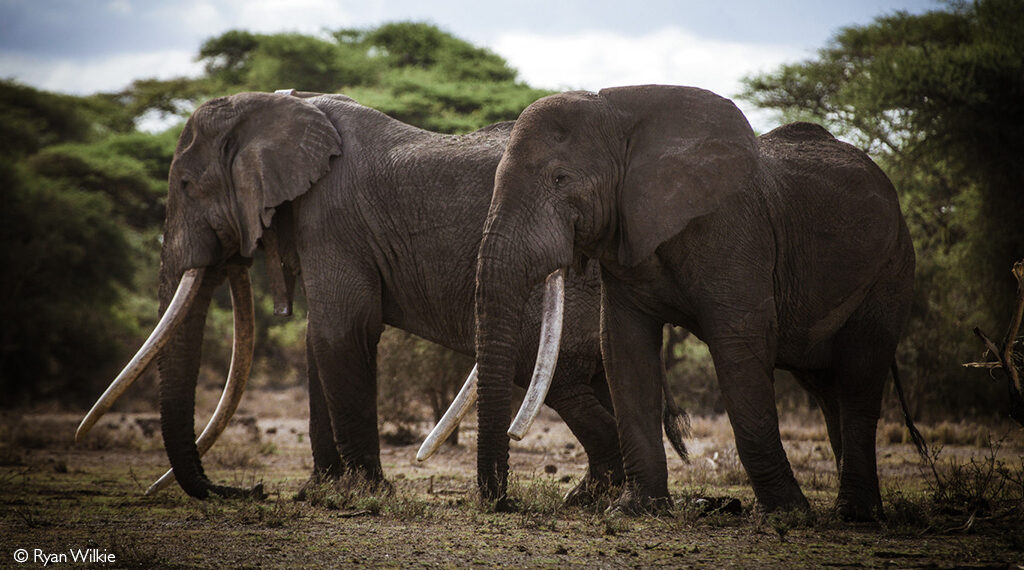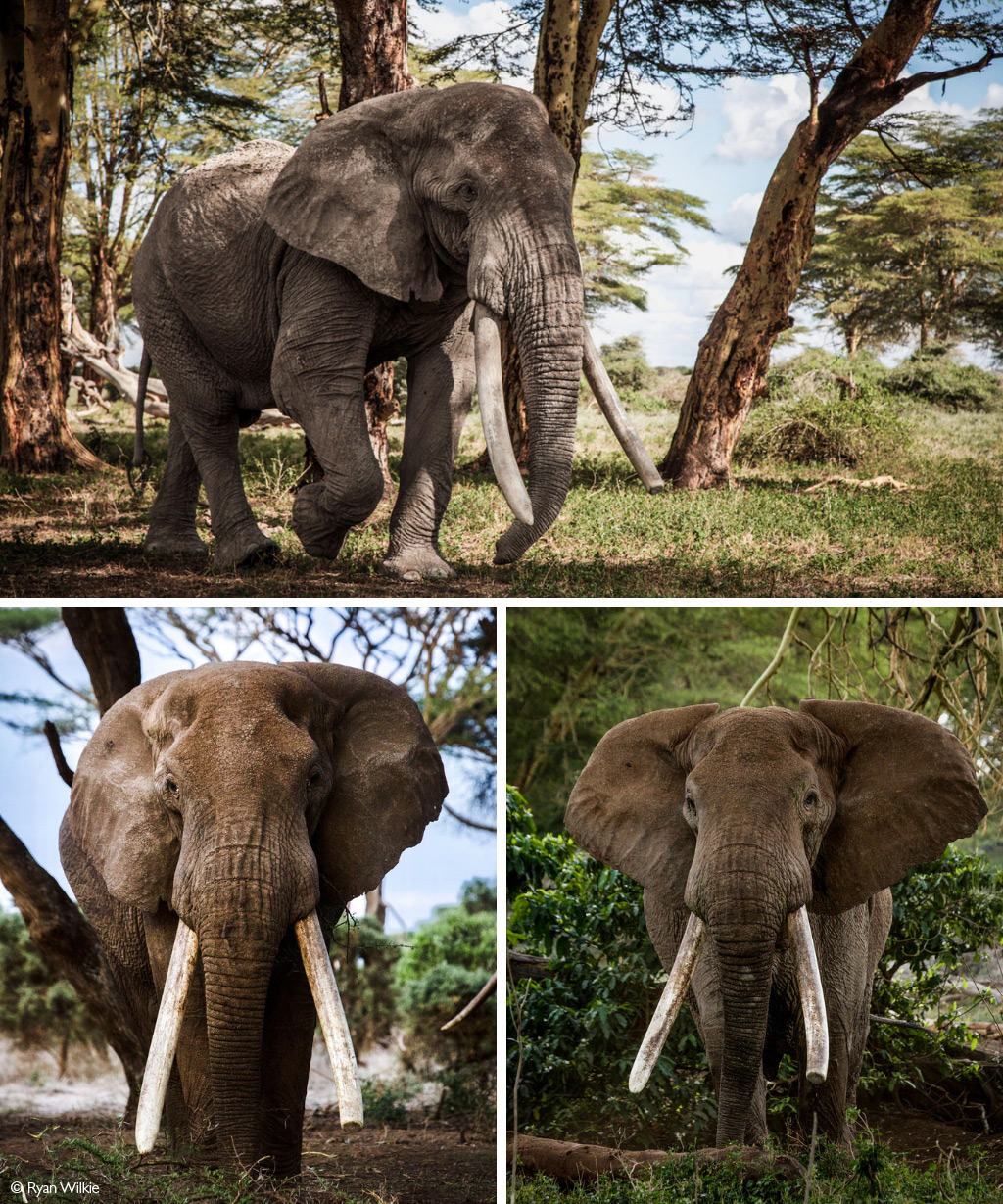
Tolstoy, the Amboseli super tusker, has died at the age of 51, just weeks after being treated for a spear wound.
Tolstoy was speared in his right front leg six weeks ago, likely by a farmer defending his crops from one of the tusker’s night-time crop-raids, according to Big Life Foundation. He was treated by joint Kenya Wildlife Service (KWS)/David Sheldrick Wildlife Trust (DSWT) mobile veterinary units at the time, and the teams continued to monitor him following the treatment.
On the morning of his death on 27 April, rangers in Kimana Sanctuary (the central part of a corridor linking Amboseli National Park and Chyulu Hills) who had been checking on Tolstoy every morning and evening since the initial treatment, found him lying down. While it was not unusual for him to lie down, on closer inspection the rangers found that he was struggling to get up.

“Following another treatment, the rescue team spent hours trying to get him back on his feet, eventually trying to prop him up with a front-end loader,” says BLF’s Jeremy Goss. “But this time around, he was just too weak, and died lying there.”
The combined efforts of thirty people from KWS, DSWT, and BLF, one helicopter, four vehicles, the front-end loader, and the best veterinary medicine possible was not enough to prevent Tolstoy from succumbing to his injury.

Tolstoy was a member of the prolific TD family of super tuskers, and survived multiple spear wounds and drought over the years. He was uncle to Amboseli’s famous elephant, Tim, who died in 2020 at the age of 50. The two were often seen together and maintained a kinship throughout their lives. Tolstoy’s mother, Teresia, was the matriarch and leader of the TD family, known for her long, straight tusks. “The males born to the TD family have all been magnificent and each one has had a calm and gentle personality,” according to Amboseli Trust for Elephants. “Tim and Tolstoy had many friends among the independent males and were much admired by the females.” Tolstoy’s tusks were once so long that they grazed the ground as he walked. But the lower portion of his tusks were sawn off by Kenya Wildlife Service in an attempt to relieve him of extra baggage – an action which was criticised by some at the time.
“Tolstoy was one of the few elephants in Africa with thick tusks that grazed the ground,” according to Elephant Voices. “To the world he was a super tusker. To us, he was Tolstoy, an elephant who came up through the ranks over the course of the time we have worked in Amboseli – from a calf in a well-known family, to a role model to younger males and a father to many of Amboseli’s younger elephants.”

One of Kenya’s much-loved elephant elders and ultimately a victim of human-wildlife conflict, Tolstoy was well known by conservationists for his calm nature. The spear wound that led to his death was the fourth spearing incident he suffered in as many years. “The case of Tolstoy is a reminder that there is still a lot of work to be done and this will not be able to continue without financial support and the support from the communities who must reckon with Tolstoy and his like on a daily basis, especially with regards to land subdivision,” says BLF’s Josh Clay.
Land subdivision plans have been completed for areas in the Amboseli ecosystem, whereby one million acres have been divided into tens of thousands of privately owned plots. It is essential that communities and conservation organisations work together in creating land-use plans that take into account the needs of both humans and wildlife to prevent similar incidents of conflict in the future.

To comment on this story: Login (or sign up) to our app here - it's a troll-free safe place 
![]()






